Ronald Reagan is many things to many people, and as we marked the 12th-anniversary of his passing, Glenn paid his respects to the man who made a huge impact on his life.
Glenn examined Reagan's early life on his TV program Tuesday, sharing the pivot points that put the 40th U.S. president on the path to becoming an American legend.
RELATED: Reagan Historian: Donald Trump Is No Ronald Reagan
Evolving is a natural and healthy part of the human experience and Glenn pointed out a person has every right to change their opinions and views. An important aspect of real change is having a pivot point and doing your own homework to learn the truth for yourself.
For a long time, Ronald Reagan was a staunch supporter of FDR and the Democratic Party.
"He would do his own homework," Glenn said. "One day, because of that homework, he would reestablish the conservative movement."
Before you can understand this change, you have to know the genesis.
Reagan used to listen to FDR deliver his "fireside chats" on the radio. In a way, Roosevelt was his mentor. It was FDR's "New Dealers," however, that made him realize the policies the Democratic Party had dangerous parallels to socialism and communism. And Reagan HATED communism.
"Reagan’s conversion didn’t happen overnight, it took almost a decade," Glenn said. "Later in his life Reagan would say this: 'By 1960, I realized the real enemy wasn’t big business, it was big government.'”
Two main events contributed to Reagan's change of heart.
The Screen Actors Guild
In 1947 he became the president of the Screen Actors Guild. During his tenure, Reagan was instrumental in the exposure of the communist infiltration of Hollywood. He was never asked for nor gave up any names, but he shed light on the reality of the infiltration.
During those years, Reagan was the Matt Damon or Susan Sarandon of his day --- the political activist type of actor you wished would just shut up and stick to the movies, Glenn explained.
General Electric
"While he was the president of SAG, Reagan was hired by GE to be their spokesperson," Glenn said. "That’s the second big event. This is where it really crystalized. The years Reagan spent working for GE equated, really, into a doctorate of conservatism."
During a nationwide strike, GE was able to keep its 16,000 workers working, thanks to another of Reagan's mentors --- Lemuel Boulware, GE's vice president of labor and community relations. Boulware became Reagan's "Yoda," teaching him about the free market and freedom in general.
Due to the success of the nationwide strikes, the head of the United Autoworkers went after Boulware and GE. Boulware took this as a challenge and went to work to correct a very familiar problem --- an undereducated public.
Glenn explained how GE went about educating America.
"They printed these pamphlets, books, papers and they distributed them to every major city they had a presence in, and Ronald Reagan was tapped to deliver the message," Glenn said. "He gave live speeches in city after city and GE even put him on a regular TV show."
Reagan wasn’t just a corporate mouthpiece, however.
"He was actually learning along with the rest of the country. There’s nothing more dynamic than when somebody is learning something and is eager to share it," Glenn said. "GE and Reagan effectively taught Americans the free market economics along with the pitfalls of socialism and big government."
Reagan didn’t stop there, he grew the movement, he evolved it, and he took a cue from his old mentor FDR -- the man at the radio. Glenn continued:
Reagan spoke in a manner similar to Roosevelt’s fireside speeches and he took those complex issues and he broke them down in a way that would be easy to understand. He directed his criticisms not only to labor leaders but also to the political party leaders themselves. And that tends to make people angry. And it wasn’t long before the government and the media came gunning for him.
And come after him they did. Federal antitrust charges were filed against SAG where he was still president and the government pressured GE into caving. GE asked to review Reagan's scripts, which he wrote himself, but Reagan refused and his contract was terminated.
This, Glenn suggested, turned out to be the final phase in his transformation.
"Reagan’s education was now complete," Glenn said. "He set out to find the truth over a decade earlier, and now the truth had brought him to the government and the government down on him."

Two years later, Reagan gave a speech that set him on a collision course with his destiny, entitled "A Time for Choosing."
These were his pivot points. This is how a young political activist could transition into the man who would set the standard for modern conservatism.
"Ronald Reagan’s legacy to the world is obvious should you care to put politics aside," Glenn said. "His legacy to the conservative movement is even more obvious. But I wonder if he would be allowed to be a conservative today."
Glenn wrapped up his remarks with a challenge.
"The message I want to bring you today is, now is a time for choosing," Glenn said. "It is our time for choosing. The question is, will we do our own homework and who will answer the call?"
Featured Image: 24th February 1982: American Republican politician and 40th President of the United States (1980 - 1988), Ronald Wilson Reagan, at a press conference. (Photo by Central Press/Getty Images)


 AASHISH KIPHAYET / Contributor | Getty Images
AASHISH KIPHAYET / Contributor | Getty Images
 Harold M. Lambert / Contributor | Getty Images
Harold M. Lambert / Contributor | Getty Images Adam Gray / Stringer | Getty Images
Adam Gray / Stringer | Getty Images Anadolu / Contributor | Getty Images
Anadolu / Contributor | Getty Images